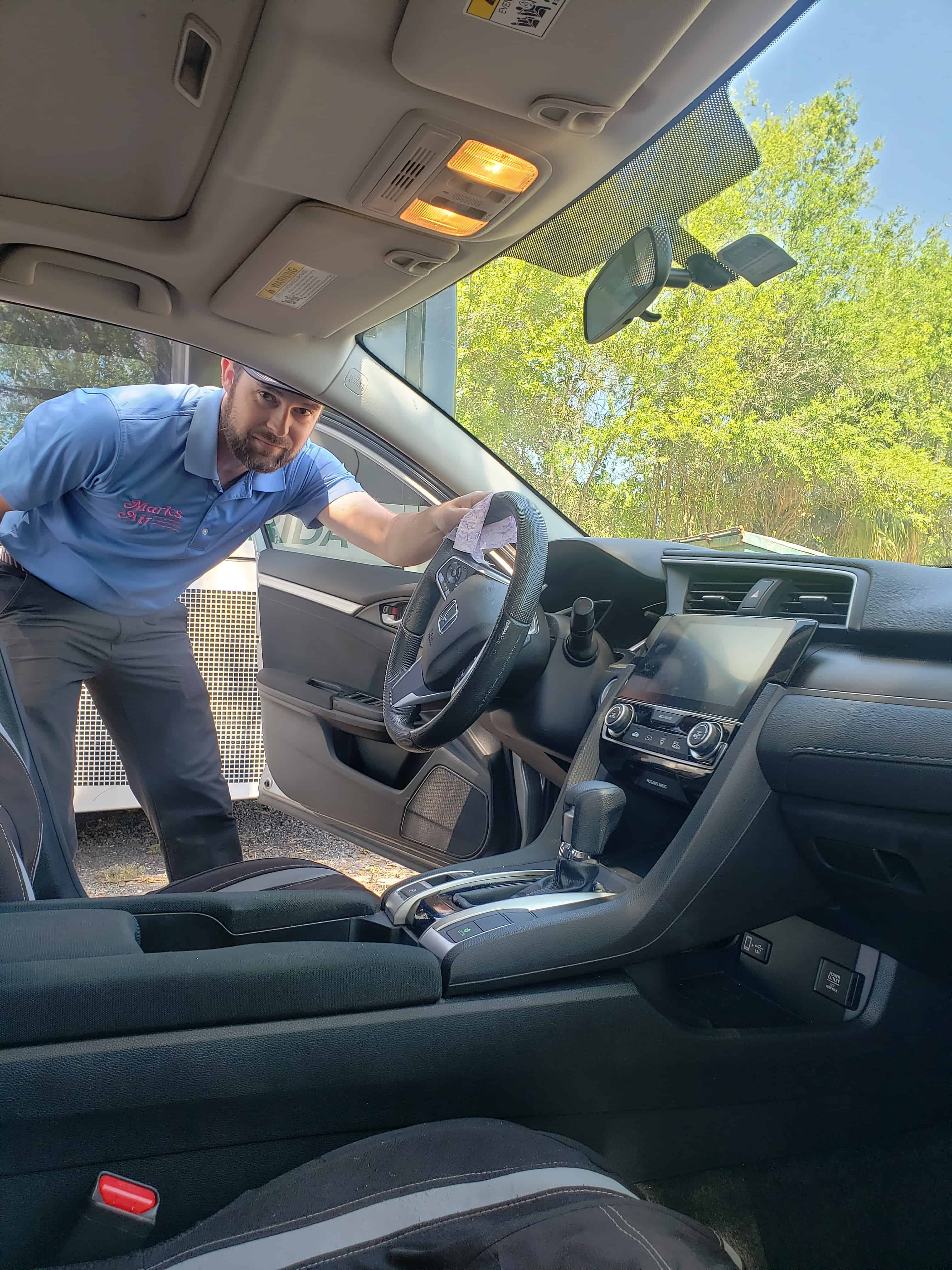Disinfecting of vehicles during COVID-19
By Ward Atkinson, MACS Technical Advisor, & Bill Hill, GM Retired
Recent comments from government agencies on the COVID-19 virus issue indicate that even when a vaccine is available, our normal daily existence may not get back to normal before the third or fourth quarter of 2021.
What does the automotive service industry need to be aware of when conducting our daily business? You should be knowledgeable of what products and equipment you ought to be using when cleaning vehicles before and after service.
It has now been widely accepted that COVID-19 spreads from person to person when people cough, sneeze, talk and laugh. These actions send airborne virus droplets into the air. COVID-19 aerosol droplets have two phases: large droplets and small particle aerosols. Aerosols can travel a great distance and remain for extended periods of time. (Like dust in air). Aerosols can also remain in airflow in confined areas (i.e., vehicle passenger compartments) and in A/C ducts.

The COVID-19 virus is 120 nanometers in size. MVAC filters will not filter it. Installation of a HEPA filter to filter particles of this size will reduce airflow and performance. Wear face masks with two or more material layers. Cotton masks will not filter.
COVID-19 disinfecting cleaning procedures vary, and none are fully validated for a vehicle. Vehicle OEMs report damage to door handles by use of disinfectant’s (liquids/hand wipes).
EPA has 497 products listed to be only used on hard, non-porous surfaces, NOT humans. The list does not clarify if the product may damage vehicle trim. “Inclusion on this list does not constitute an endorsement by EPA.”
FDA covers products, including chemicals and equipment, for use by humans. FDA lists 194 hand sanitizer products not to use.
Solutions containing 70 percent ethanol or isopropyl alcohol and water are effective against coronavirus. One MSDS lists isopropyl alcohol with distilled water 70-30% as having a flammability rating. Water content slows evaporation, increasing effectiveness of surface contact time. Concentrations higher than 80-85% decreases disinfectant effectiveness. If an ignition (flame) source is present, alcohol hand sanitizer should not be applied.
What not to do when cleaning vehicle interiors
Don’t use bleach (chlorine) or hydrogen peroxide on inside vehicle surfaces. Both kill coronaviruses on surfaces but can damage car’s interior trim.
Do not use ammonia-based cleaners on car touch screens. They can damage anti-glare and anti-fingerprint coatings.
Use of solar and/or vehicle heater to raise cabin surface temperatures is not practical to kill the virus. It is difficult to raise all cabin surfaces to the same required temperature to kill the virus. Research studies indicate COVID-19 in aerosol form becomes inactive (shortest time of survival) at 60 0 C (140 0 F) air temperature after four hours or five minutes at 70 0 C (158 0 F). SARS required 56 C 0 (132.8 F) for 15 minutes. (WHO)
Soap and water may not entirely remove the virus. When cleaning upholstery, using too much water or soap may result in wet fabric and cushions causing musty smells or mold growth.
Disinfecting Vehicle Cabins
The best approach is: When working on the vehicle, service technicians need to take all the precautions they are comfortable with to protect themselves and the customer.

Leave a Reply